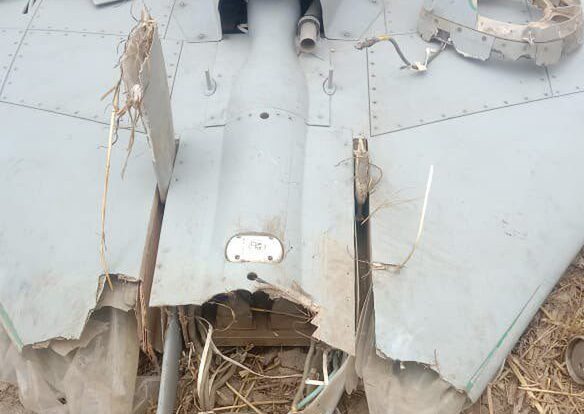
The Indian Air Force’s raid on targets in Pakistan during the night of May 6 to 7, 2025, was supported by “kamikaze” drone attacks. Here’s a look at what the Indians used for the attack.
The Pakistanis assert they brought down multiple “suicide” drones, including one from Poland.
Warmate
Unmanned aerial vehicles along with Israeli HAROP drones. These aircraft have an extensive operational range and significant carrying capacity, designed for locating and targeting anti-aircraft radar systems.
IAI HAROP drones — an aerial missile boasting a 620-mile range
The HAROP drone made its debut at the Aero India exhibition in 2009. Created by Israel Aerospace Industries (IAI), this model represents an enhanced iteration of the smaller HARPIA drone. Equipped to circle above a battlefield, it remains patient until it identifies a fitting target, then strikes using its warhead.
Read also:
The Kashmir dispute escalates as India and Pakistan exchange fatal strikes.
The IAI HAROP is a large drone weighing about 300 pounds, capable of staying in the air for 9 hours at an altitude of up to 15,000 feet. Its range is approximately 620 miles, and communication is possible over a distance of up to 124 miles. Beyond this, the drone operates autonomously after pre-loading the coordinates, target appearance, and search area.
HAROP — can also locate airborne radar systems for air defenses
Furthermore, the IAI HAROP has a mechanism designed to detect radio frequency emitters, enabling it to target entities such as anti-aircraft radar installations or communications towers, akin to the
AGM-88 HARM missiles
. Additionally, it features an electro-optical head with a thermal camera, enabling precise targeting with an accuracy of less than 3 feet.
Read also:
India-Pakistan relations escalate as they engage in a significant aerial conflict.
This accuracy, along with a 35-pound fragmentation warhead, guarantees strong performance against soft targets, lightweight structures, and even items afloat.
Israelis highlight that their drone boasts excellent stealth capabilities (with an RCS of less than 5.4 square feet) making it particularly effective for strikes inside hostile territories. It can launch assaults from all directions, including vertical approaches. Additionally, this unmanned vehicle provides the option to cancel the attack mid-flight; subsequently, it will hover above the region again, ready to engage new targets as they appear.
HAROP drones have been acquired by India, Turkey, and Azerbaijan, countries that employed these systems during their recent confrontations with Armenia regarding Nagorno-Karabakh. Additionally, India has utilized some of these drones against Pakistan.
Read also:
India deploys BrahMos missile in strong attack against Pakistan
Read also:
India’s strikes in Pakistan highlight the effectiveness of Polish drones.
Revealed: North Korea’s Tactics – Drones Engage in Warfare Over Ukraine’s Skies
Tarnów Mechanical Works in Poland leads in developing anti-drone defense technologies.





